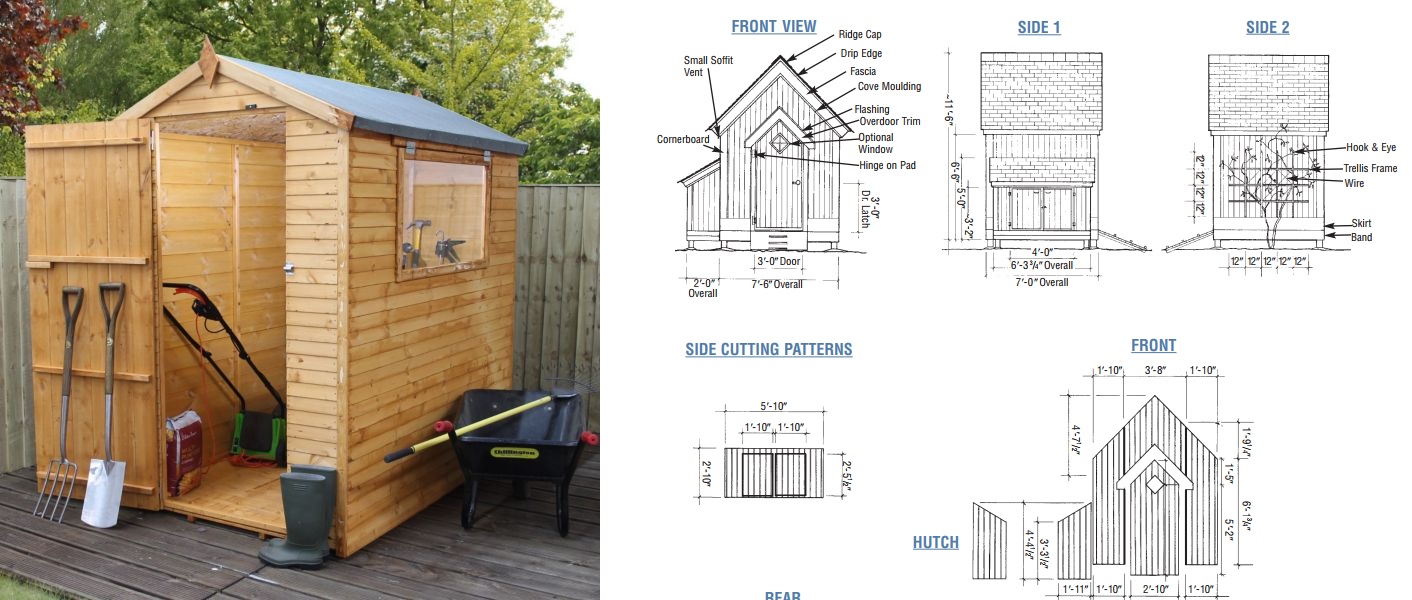
Hey there, green thumbs! Want to finally get organized in your garden? Tired of tripping over tools and bumping into bags of fertilizer? Building your own garden shed is the perfect solution! It's a project that's surprisingly doable, even for beginners, and it can add tons of value to your backyard.
Let's talk about why building a garden shed yourself is such a fantastic idea:
Cost-effective: Buying a pre-built shed can cost a pretty penny. DIYing lets you control the budget and choose materials that fit your needs.
Customization: Want a unique shed that perfectly complements your garden? You can tailor the size, shape, and features to your liking.
Sense of accomplishment: There's nothing like the satisfaction of creating something with your own two hands.
Now, before you grab your hammer and nails, let's break down the steps to building your dream shed:
1. Planning and Preparation:
Measure and Sketch: Grab a tape measure and paper. Determine the ideal location for your shed and measure the space available. Sketch out your design, thinking about the size, height, and features you need.
Materials: Research different types of wood, roofing, and siding. Consider your budget and the style you want.
Building Codes: Check your local building codes to make sure your shed meets regulations.
Permits: Depending on your location, you may need a building permit. It's best to check with your local government.
2. Foundation Fundamentals:
Choosing the Right Base: You have a few options:
Concrete slab: Provides a solid base but requires more work.
Concrete blocks: A cost-effective and easy option, but may require some leveling.
Pressure-treated wooden deck: Quick and easy, but may need some upkeep.
Preparing the Site: Clear the area of debris, level the ground, and mark out the foundation dimensions.
3. Framing the Structure:
Laying the Floor: Build a sturdy floor frame using pressure-treated lumber. Use joists spaced 16 inches apart for support.
Erecting the Walls: Frame the walls using studs spaced 16 inches apart.
Roof Framing: Choose your roof design (gable, shed, or hip) and build the rafters to support the roofing.
4. Sheathing and Siding:
Sheathing: Cover the walls and roof with plywood or OSB sheathing for added strength and a solid surface for siding.
Siding: Choose your desired siding material, whether it's wood, vinyl, or metal. Install it according to the manufacturer's instructions.
5. Roofing:
Underlayment: Install a layer of roofing underlayment for water protection.
Shingles or Roofing Material: Choose your roofing material and secure it to the roof framing.
6. Doors and Windows:
Door Installation: Measure the opening for your door and install it securely. Consider using pre-hung doors for a quicker and easier installation.
Windows: Measure for your windows and install them securely.
7. Finishing Touches:
Painting or Staining: Give your shed a fresh look with paint or stain.
Adding Hardware: Install hinges, door handles, and any other hardware you need.
Insulation: If you plan on using the shed year-round, consider adding insulation to the walls and roof.
Tips for Success:
Safety First: Always wear safety gear, including gloves, eye protection, and ear protection.
Measure Twice, Cut Once: Accuracy is crucial in building. Measure carefully and double-check your measurements before cutting.
Take Your Time: Don't rush the process. Take your time to do each step carefully, and remember, quality over speed!
Seek Help When Needed: Don't be afraid to ask for help from a more experienced friend or family member if you need assistance.
Affordable Options:
Recycled Materials: Consider using salvaged materials like old pallets or reclaimed lumber to reduce costs.
Simple Designs: Choose a basic shed design with minimal features to simplify construction.
Focus on Functionality: Prioritize the essential features you need and avoid adding unnecessary extras.
Beyond the Basics:
Adding a Loft: Increase storage space by building a loft above the main area.
Creating a Workbench: Build a workbench for your tools and projects.
Adding Electricity: Run electrical wiring for lighting and power outlets.
Remember, building a garden shed is an exciting and rewarding project. It's a chance to express your creativity, save money, and create a valuable asset for your garden. So, grab your tools, follow these steps, and get ready to enjoy your new backyard haven!
No comments:
Post a Comment